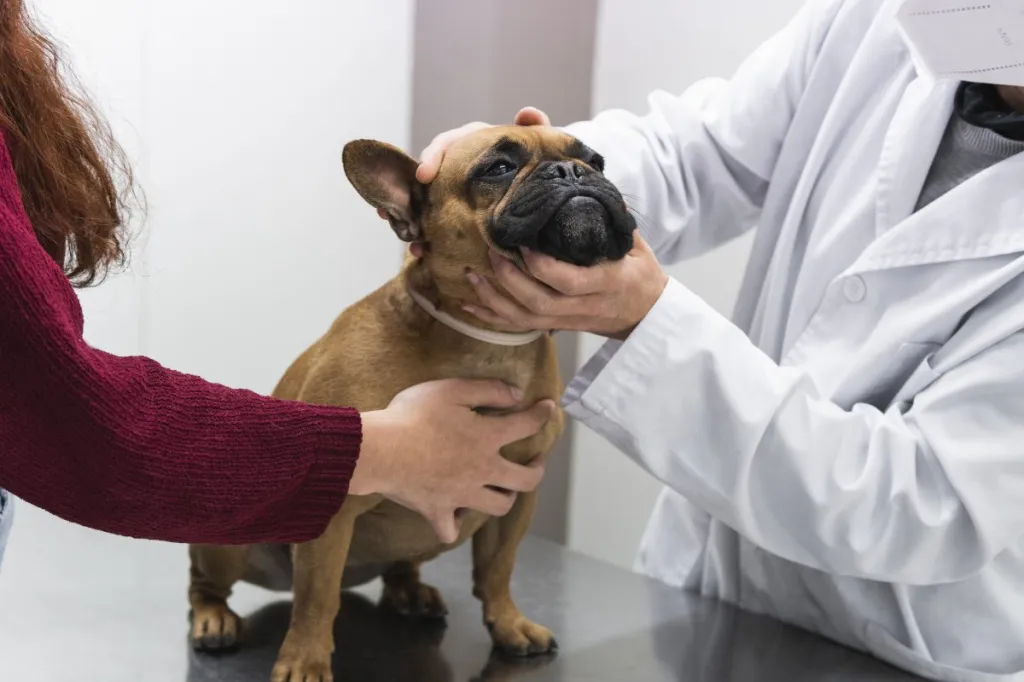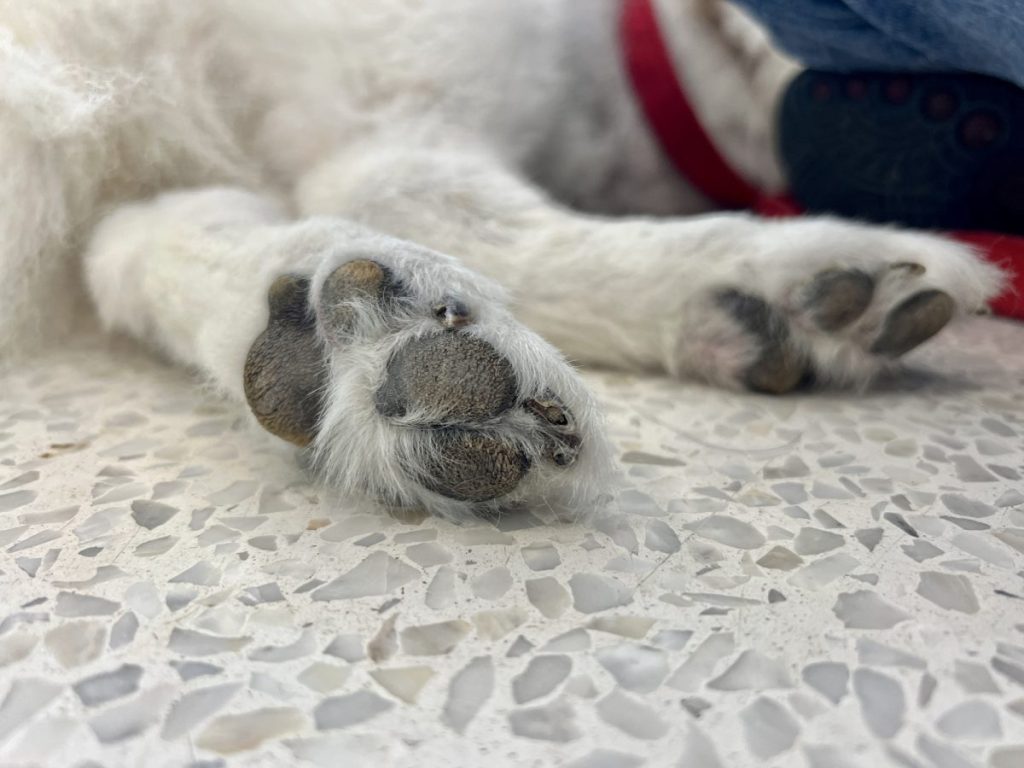Hyperkeratosis in dogs is a condition characterized by the thickening of the skin’s outer layer due to excess production of keratin. Often, it can give a “hairy” or “horn-like” appearance, particularly affecting the nose — known as nasal hyperkeratosis — or the pads of the feet — referred to as footpad hyperkeratosis. While not painful, hyperkeratosis can cause your dog discomfort and may also indicate underlying health issues that require further attention.
Here’s what you should know about the symptoms, causes, and treatments for the condition.
Symptoms of hyperkeratosis in dogs
Spotting the signs of canine hyperkeratosis early can help in managing the condition effectively. Some common symptoms include:
- Thickened, rough, and hard skin on the nose or paw pads
- Hairy or feathery appearance on the affected areas
- Limping (due to discomfort in the paw pads)
- Excessive licking of the paws or nose
- Bleeding from cracks in the skin
- Breathing difficulties or changes in the normal wetness (in nasal hyperkeratosis)
If you notice these symptoms, it’s important to consult your veterinarian for a proper diagnosis. During the diagnostic process, your vet will carefully inspect the affected area and consider the symptoms you’ve observed. They may ask you about your dog’s history, diet, and environment to rule out other potential causes of the symptoms.
In some cases, further diagnostic tests may be necessary to confirm hyperkeratosis. Your vet might take skin scrapings from the affected area to look for parasites or fungal infections, perform a biopsy to examine the tissue more closely, or recommend blood tests to check for underlying health issues.
Causes of hyperkeratosis in dogs

One of the primary causes of hyperkeratosis is genetic predisposition. Certain breeds — especially brachycephalic breeds — are more prone to developing this condition, such as:
- Boston Terrier
- English Bulldog
- Pug
- French Bulldog
- Boxer
- Labrador Retriever
- Irish Terrier
- Dogue de Bordeaux
- Cocker Spaniel
These hereditary factors result in the abnormal keratinization process, which is often evident from a young age and tends to progress with time. Beyond genetics, environmental factors and nutritional deficiencies also play significant roles in the development of hyperkeratosis. Constant exposure to hard surfaces or extreme temperatures can physically stress the skin and paw pads, resulting in excessive keratin as a protective measure. Because older pets tend to lie down and sleep more frequently, hyperkeratosis is often observed in dogs between the ages of eight to 12.
Additionally, deficiencies in essential fatty acids and zinc can contribute to the skin’s inability to regulate normal keratin production. Hyperkeratosis can also appear as a symptom of various health issues, such as hormonal, viral, and autoimmune diseases. These may include canine distemper, pemphigus foliaceus, lupus erythematosus, and Cushing’s disease.
Treatments for hyperkeratosis in dogs
Many dog parents question how to get rid of hyperkeratosis or if it will ever go away on its own. The answer largely depends on the condition’s underlying cause and severity. While hyperkeratosis itself is not curable, its symptoms can be managed effectively with the right approach.
- Topical treatments: Applying moisturizers or balms specifically designed for dogs can help soften the hard skin and provide relief. Your vet may also recommend a keratolytic agent which helps to dissolve the excess keratin on the skin’s surface.
- Dietary adjustments: What your dog eats can impact the health of their skin. Incorporating omega-3 fatty acids into your dog’s diet can promote healthier skin and potentially reduce the symptoms of hyperkeratosis. Consult your vet for recommendations on supplements or diet changes that might benefit your dog.
- Protective gear: Protecting your dog’s paws with booties can be helpful, especially when walking on harsh surfaces or in extreme weather conditions. This can prevent further irritation and protect the sensitive areas from getting worse.
- Environmental and lifestyle changes: Consider the environment your dog lives in. Hard surfaces can exacerbate the symptoms of hyperkeratosis, so providing softer bedding or adding rugs can offer some relief. Regular, gentle exercise can also help maintain the health of your dog’s paw pads by promoting good circulation.
- Medical interventions: In some cases, hyperkeratosis may require medical intervention. Your vet might prescribe medications to control underlying conditions that could be contributing to the skin changes. In severe instances, surgical removal of the excess keratin might be considered.
Hyperkeratosis in dogs can be concerning, but with proper care and treatment, your dog can enjoy a happy and comfortable life. If you suspect your dog might be suffering from hyperkeratosis, consult with your veterinarian for a proper diagnosis and tailored treatment plan. Remember, early intervention is key to managing this condition effectively.









